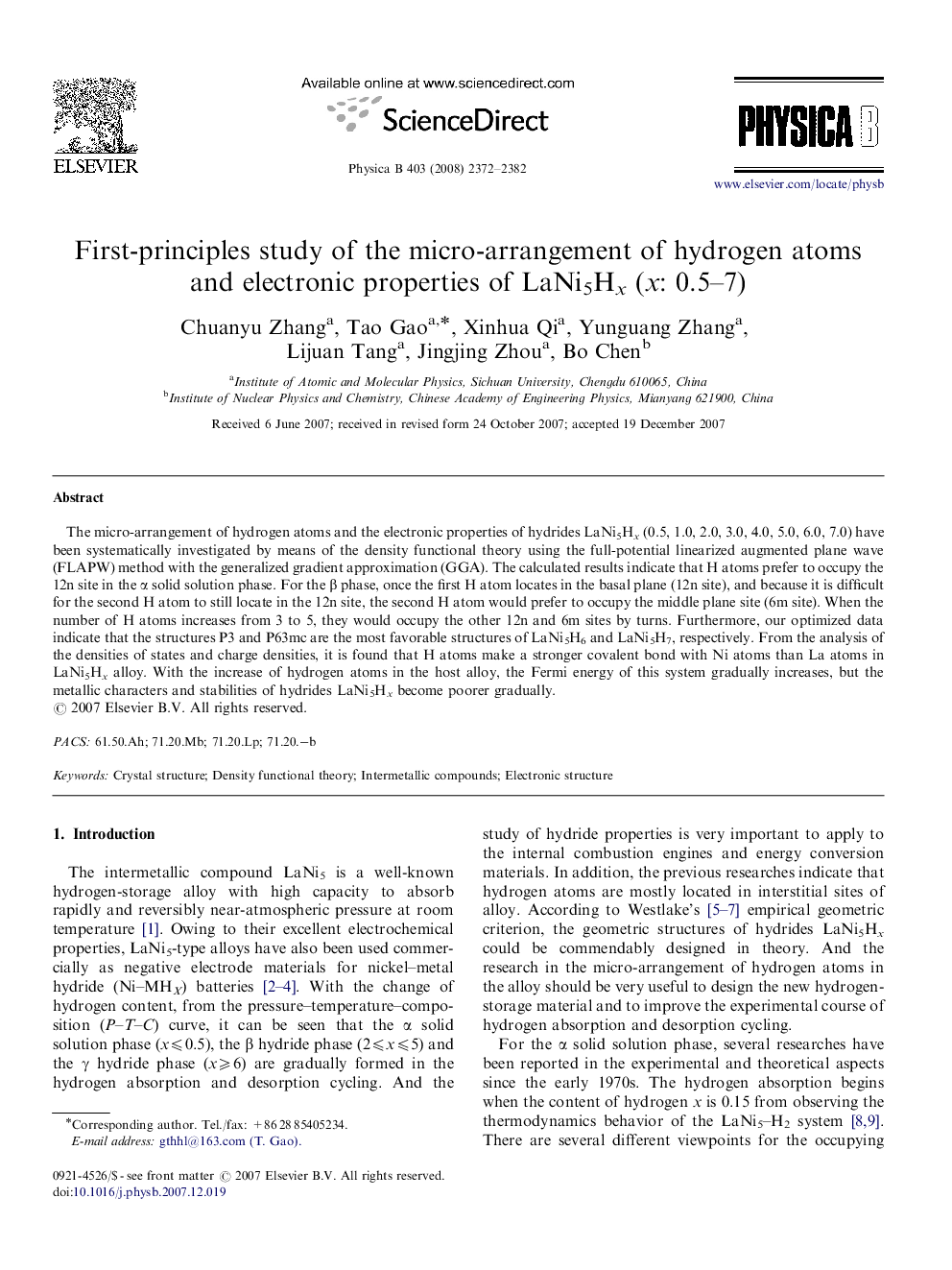| Article ID | Journal | Published Year | Pages | File Type |
|---|---|---|---|---|
| 1813091 | Physica B: Condensed Matter | 2008 | 11 Pages |
The micro-arrangement of hydrogen atoms and the electronic properties of hydrides LaNi5Hx (0.5, 1.0, 2.0, 3.0, 4.0, 5.0, 6.0, 7.0) have been systematically investigated by means of the density functional theory using the full-potential linearized augmented plane wave (FLAPW) method with the generalized gradient approximation (GGA). The calculated results indicate that H atoms prefer to occupy the 12n site in the α solid solution phase. For the β phase, once the first H atom locates in the basal plane (12n site), and because it is difficult for the second H atom to still locate in the 12n site, the second H atom would prefer to occupy the middle plane site (6m site). When the number of H atoms increases from 3 to 5, they would occupy the other 12n and 6m sites by turns. Furthermore, our optimized data indicate that the structures P3 and P63mc are the most favorable structures of LaNi5H6 and LaNi5H7, respectively. From the analysis of the densities of states and charge densities, it is found that H atoms make a stronger covalent bond with Ni atoms than La atoms in LaNi5Hx alloy. With the increase of hydrogen atoms in the host alloy, the Fermi energy of this system gradually increases, but the metallic characters and stabilities of hydrides LaNi5Hx become poorer gradually.
